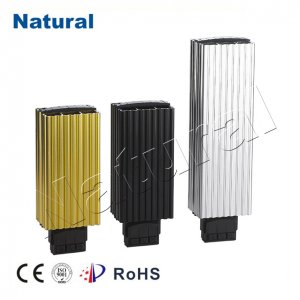In the world of electronics and technology, maintaining optimal operating conditions is crucial for the longevity and performance of various devices and equipment. Enclosure heaters, often overlooked but highly essential components, play a significant role in achieving these conditions. This article delves into the significance, functions, and benefits of enclosure heaters in ensuring the reliability of electronic systems.

The Significance of Enclosure Heaters Electronic components are sensitive to temperature fluctuations, with extreme heat or cold potentially leading to malfunctions, reduced lifespan, or even catastrophic failures. Enclosure heaters address this vulnerability by maintaining a consistent temperature within the protective casing that houses these components. Whether it’s a frigid outdoor environment or an industrial setting with fluctuating temperatures, enclosure heaters ensure that electronic equipment remains within its ideal operational range. How Enclosure Heaters Work Enclosure heaters operate on a simple principle: they generate controlled heat to offset the cooling effect of the surrounding environment. These heaters are usually installed inside the enclosures, with their heat output carefully regulated to prevent overheating. A thermostat or temperature controller is often integrated into the system, allowing the heater to activate only when necessary. This dynamic control prevents wasted energy and maintains the components at the desired temperature. Benefits of Enclosure Heaters Preventing Condensation: One of the primary challenges in electronic enclosures is the potential for condensation to form. Fluctuations in temperature can cause moisture to accumulate, leading to short circuits and corrosion. Enclosure heaters prevent this by keeping the internal temperature above the dew point, eliminating the risk of condensation. Extended Lifespan: Consistently maintaining a controlled environment helps extend the lifespan of electronic components. Enclosure heaters reduce thermal stress caused by rapid temperature changes, which can lead to mechanical failures or material fatigue over time. Enhanced Performance: Many electronic devices have optimal temperature ranges for efficient operation. Enclosure heaters ensure that components function within these ranges, leading to improved overall performance and reliability. Cost Savings: While the upfront cost of installing enclosure heaters might be a consideration, the long-term cost savings can be substantial. Preventing damage from temperature fluctuations reduces the need for frequent maintenance, repairs, and replacements. Applications of Enclosure Heaters Enclosure heaters find applications in various industries: Telecommunications: Communication equipment often operates in outdoor environments exposed to varying weather conditions. Enclosure heaters keep these devices operational by preventing moisture ingress and temperature-related failures. Industrial Automation: Industrial settings are notorious for temperature fluctuations. Enclosure heaters ensure that critical automation systems continue to function reliably, avoiding costly downtime. Transportation: In sectors like aviation and railways, electronic components within control panels and communication systems require protection from extreme temperatures. Enclosure heaters guarantee consistent operation, contributing to passenger safety and system efficiency. Conclusion In the intricate world of electronics, where the smallest factors can lead to significant consequences, enclosure heaters stand as unsung heroes. These unassuming devices play a crucial role in ensuring the reliability, longevity, and optimal performance of electronic systems across various industries. By preventing condensation, extending the lifespan of components, enhancing performance, and contributing to cost savings, enclosure heaters have rightfully earned their place as indispensable components in the realm of modern technology.